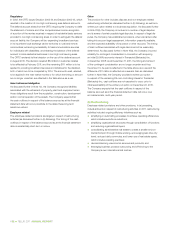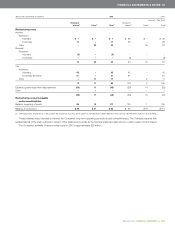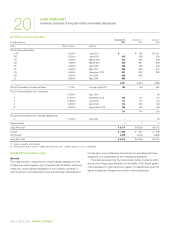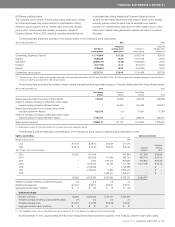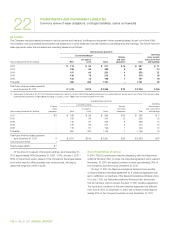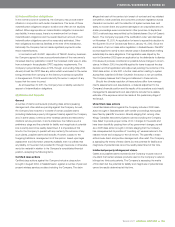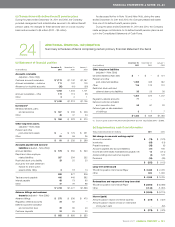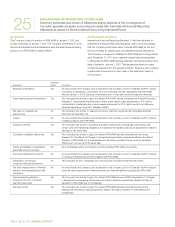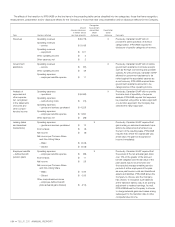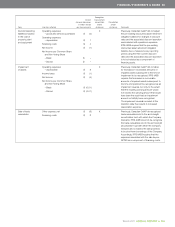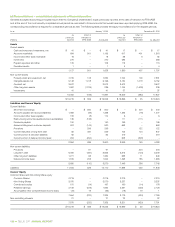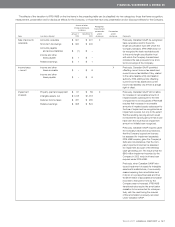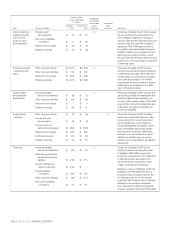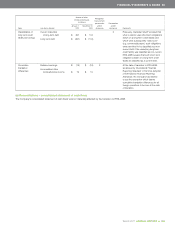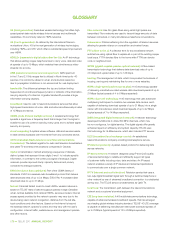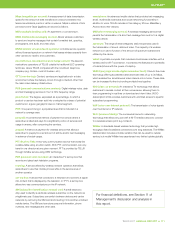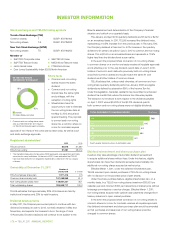Telus 2011 Annual Report Download - page 166
Download and view the complete annual report
Please find page 166 of the 2011 Telus annual report below. You can navigate through the pages in the report by either clicking on the pages listed below, or by using the keyword search tool below to find specific information within the annual report.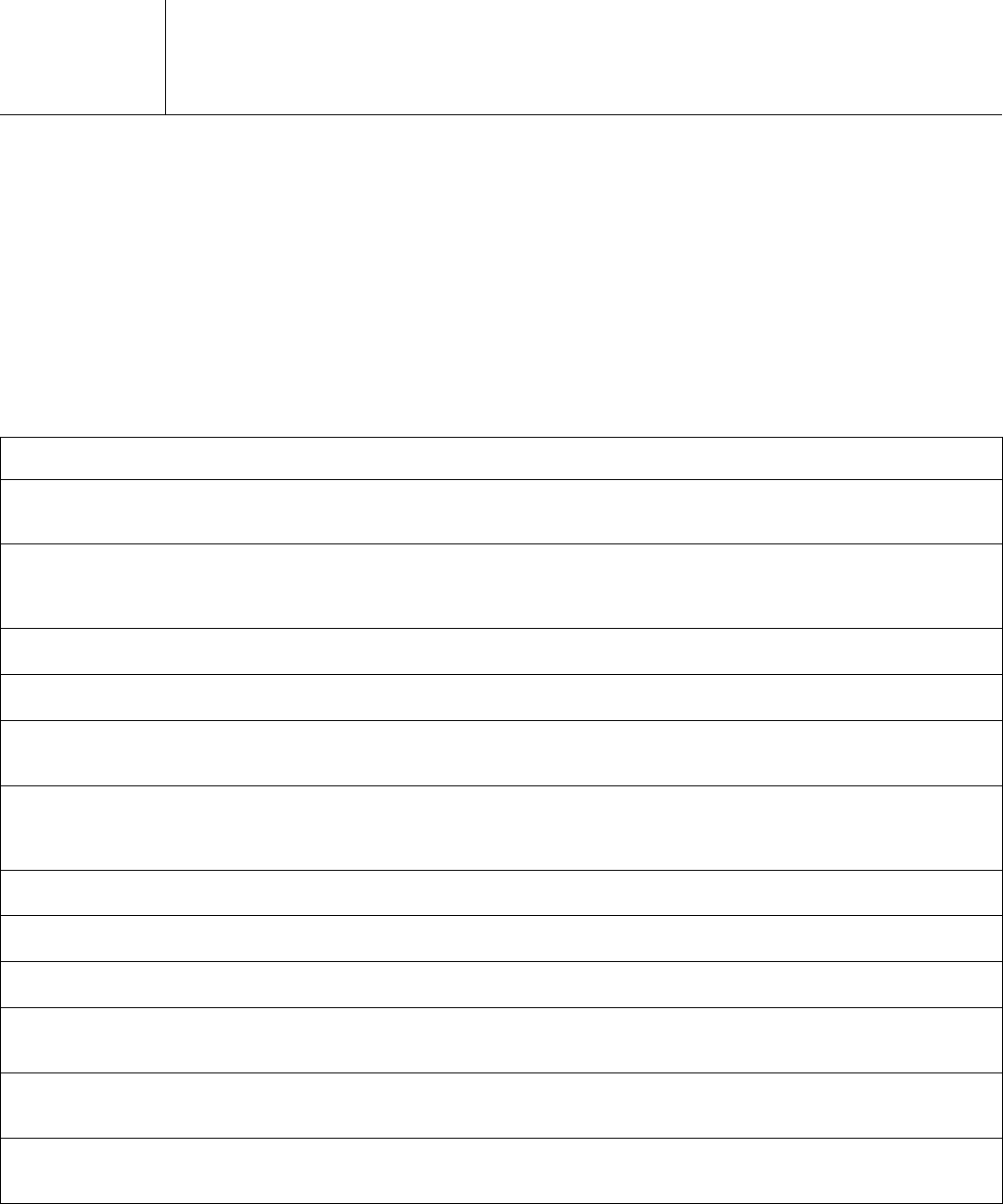
162 . TELUS 2011 ANNUAL REPORT
25 EXPLANATION OF TRANSITION TO IFRS-IASB
Summary schedules and review of differences arising because of the convergence of
Canadian generally accepted accounting principles with International Financial Reporting
Standards as issued by the International Accounting Standards Board
(a) General
The Company’s date of transition to IFRS-IASB is January 1, 2010, and
its date of adoption is January 1, 2011. The Company’s December 31, 2010,
annual consolidated financial statements were the latest presented using
previous non-IFRS-IASB compliant GAAP.
(b) Exemption elections
International Financial Reporting Standard 1, First-time Adoption of
International Financial Reporting Standards, sets out the procedures
that the Company must follow when it adopts IFRS-IASB for the first
time as the basis for preparing its consolidated financial statements.
The Company is required to establish its IFRS-IASB accounting policies
as at December 31, 2011, and, in general, apply these retrospectively
to determine the IFRS-IASB opening statement of financial position at its
date of transition, January 1, 2010. This standard provides a number
of optional exemptions to this general principle. These are set out below,
together with a description in each case of the exemption taken by
the Company.
Exemption
Exemption
taken?
Comments
Business combinations Yes As would impact the Company, and as adopted by the Company, pre-2011 Canadian GAAP in respect
of business combinations, consolidation and non-controlling interests was aligned with IFRS-IASB
effective January 1, 2009; business combinations prior to that date would be measured differently.
Share-based payment transactions Yes The Company has chosen to apply the relevant IFRS-IASB standard (International Financial Reporting
Standard 2, Share-based Payment) only to share option awards made subsequent to 2001 and to
modification of outstanding share option awards subsequent to 2001 (which results in no difference
from past application of pre-2011 Canadian GAAP).
Fair value or revaluation as
deemed cost
No The Company has chosen to measure its property, plant and equipment and intangible assets at
historical cost (see Note 1(r)).
Leases No As would impact the Company, and as adopted by the Company, pre-2011 Canadian GAAP in respect
of leases is aligned with IFRS-IASB.
Employee benefits Ye s The Company has chosen to recognize cumulative unamortized actuarial gains and losses, past
service costs and transitional obligations and assets at the transition date as an adjustment to retained
earnings on the same date.
Cumulative translation differences Yes The Company has chosen to apply the relevant IFRS-IASB standard (International Accounting
Standard 21, The Effects of Changes in Foreign Exchange Rates) prospectively effective the date of
transition to IFRS-IASB due to immateriality and will deem cumulative foreign currency translation
differences to be zero as of the same date.
Assets and liabilities of subsidiaries,
associates and joint ventures
No As a consolidated entity, the Company first-time adopted IFRS-IASB concurrently.
Compound financial instruments No As would impact the Company, and as adopted by the Company, pre-2011 Canadian GAAP in respect
of compound financial instruments is aligned with IFRS-IASB.
Designation of previously
recognized financial instruments
No The Company did not re-designate any of its previously recognized financial instruments.
Fair value measurement of financial
assets or financial liabilities at initial
recognition
No As would impact the Company, and as adopted by the Company, pre-2011 Canadian GAAP in respect
of the fair value measurement of financial assets and financial liabilities is aligned with IFRS-IASB.
Decommissioning liabilities
included in the cost of property,
plant and equipment
Yes The Company has chosen to apply the relevant IFRS-IASB standard (IFRIC Interpretation 1, Changes
in Existing Decommissioning, Restoration and Similar Liabilities) prospectively effective the date of
transition to IFRS-IASB due to immateriality.
Borrowing costs Ye s The Company has chosen to apply the relevant IFRS-IASB standard (International Accounting
Standard 23, Borrowing Costs) prospectively effective the date of transition to IFRS-IASB due to
immateriality.


